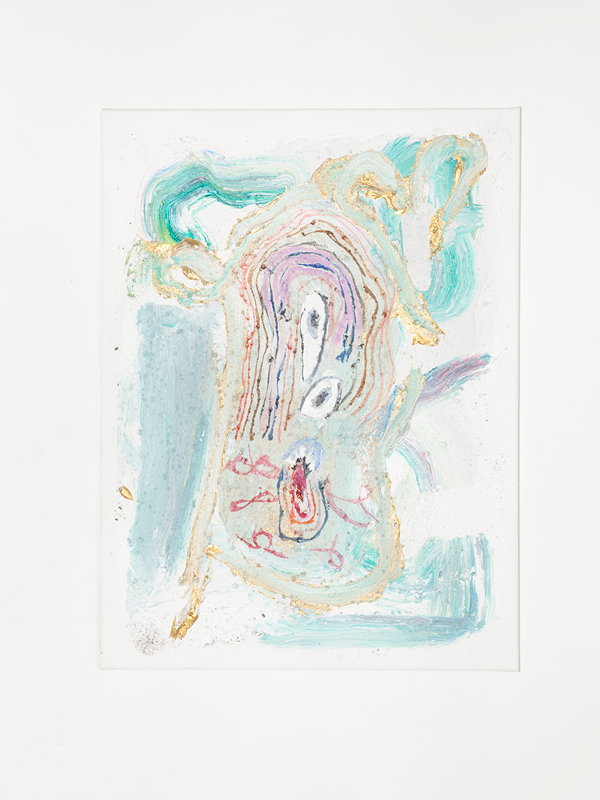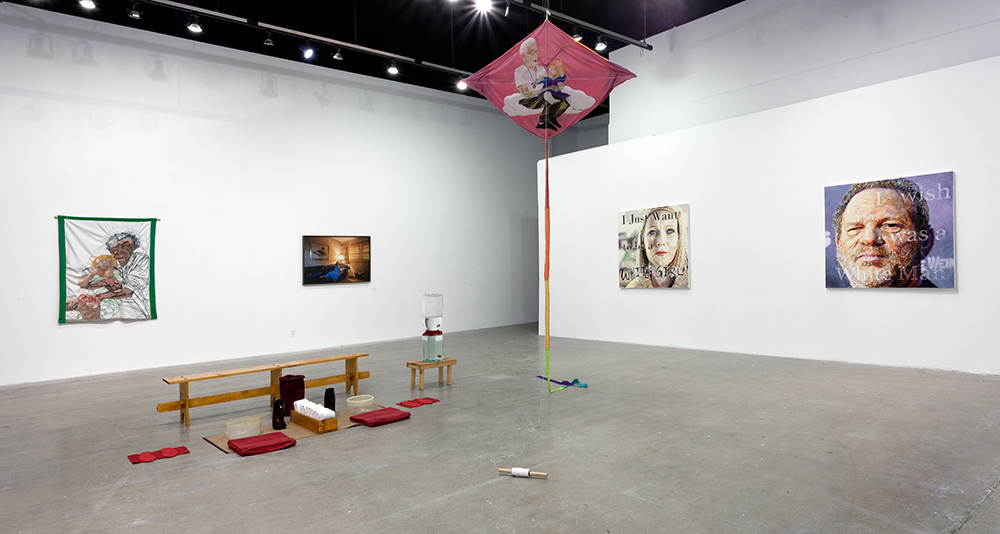Eeek! Geoff Tuck
Co-curated by David Bell, Marcus Herse and David Richards
Sept 21 - Oct 26, 2019
Visitor Welcome Center, Los Angeles, CA

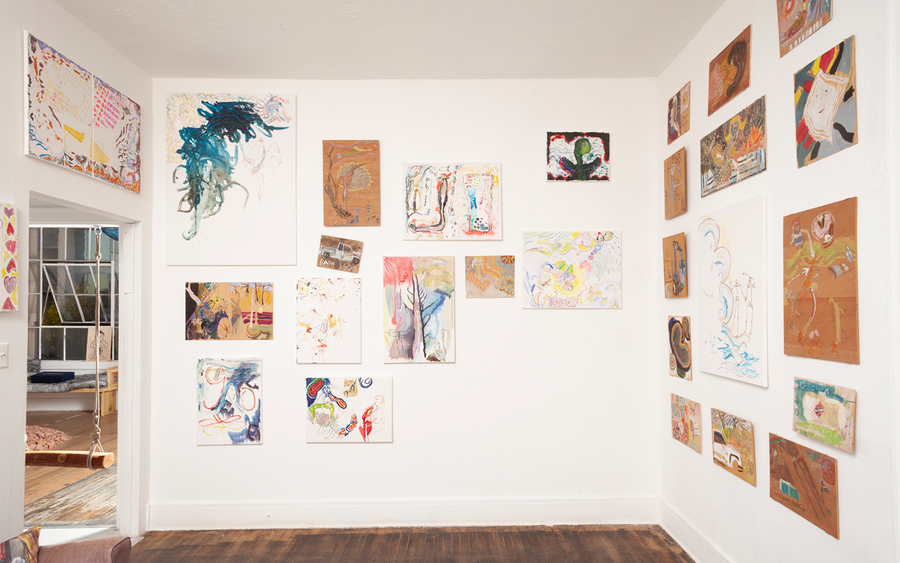
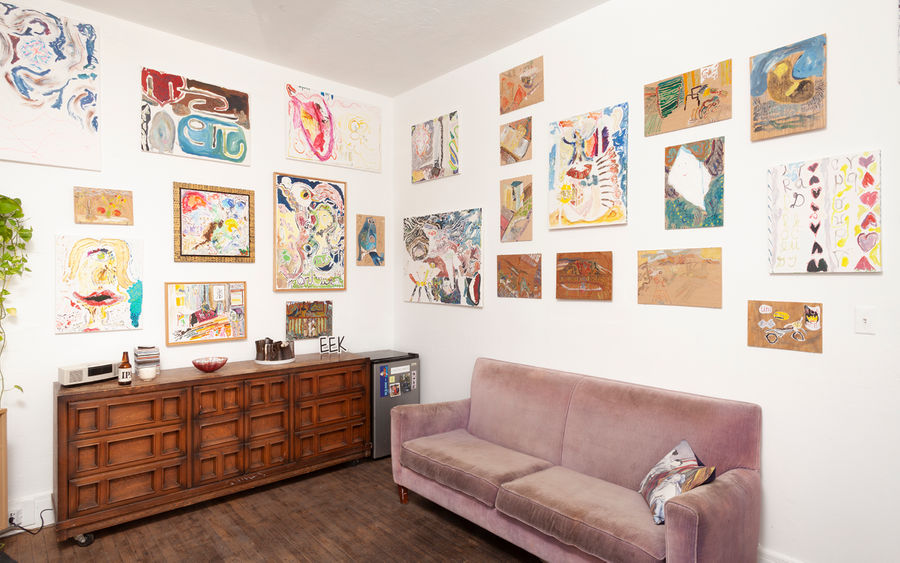
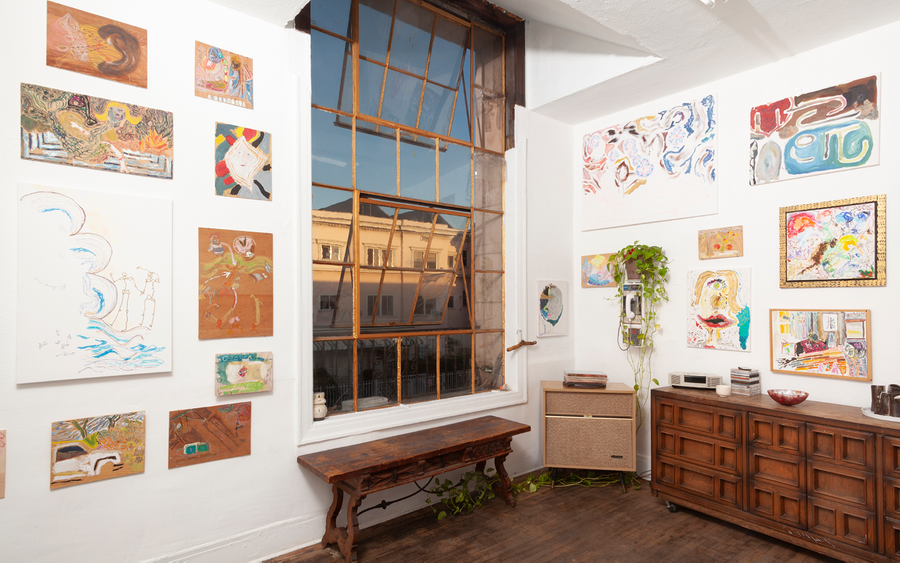

Visitor Welcome Center presents Eeek! A collection of paintings, music and memories by our late friend Geoff Tuck, co-curated by Marcus Herse.
Painting is blue, red, yellow, and green. It is round and grey, small, and off centered. It is intelligent, and charmingly stupid. It is orange and still, and collects dust. Painting seems easy until you try. Paintings are gold, shimmering and sultry, and made of the ground we walk on. They are technology and moon landings delivered in crates bigger than doorways. They are your friend, your dog, and your dog’s bone. Painting is for kids and old folks and trash cans and fields filled with flowers; they are trampled on and nurtured, rescued and discarded and started over—and signed. Painting is a gift, a follow through, foreign and curious. Painting is a catastrophe—missing for years, dug up, tearful and relevant again. Painting—determined, mediocre and mysteriously flawed, perfect even. Painting is useful and unapologetic; it pretends. Painting tells you what to do, so you’ll get angry and say, Hey Painting! Stop telling me what to do! "No problem," painting says "stop looking at me." Painting is black and fabulous and far, it is the light on your lips, calm and exhausted, and calling you late night, I’m trying to sleep painting! Leave me alone! But painting is petty, and has already hung up.
Text by David Bell
La Frontera - The Border: An Interdisciplinary Examination
Tanya Aguiniga, Natalia Anciso, Raul Baltazar, Nikki Darling, Luis G. Hernandez, Ingrid Levya, Richard Lou, Roy Martinez, Robert J. Sánchez
Co-curated by LakeLyn Bagge, Alondra Costilla, Tram Dang, Marcus Herse, Grace Jones, Kayla Quinlan, Hannah Scott
August 26 - November 17, 2019
Chapman University’s Guggenheim Gallery, Orange, CA
La Frontera- The Border: An Interdisciplinary Examination; Catalog
Ponsi, Lou. Chapman University hosts exhibits, panels, screenings to examine issues surrounding the border; Los Angeles Times, September. 6, 2019
This exhibition shows artworks, created around and influenced by the Mexico - U.S. border. The artists explore the implications of the physical border, which is at the same time informed by and feeding back into popular sentiment and psychological borders. From artivist aesthetics* to personal histories, the ramifications of the border on the lives of the communities on both sides of it, as well as the broader political significance of this delineating landmark are under investigation. The term Border-Art is a young art historical category and dates back to the formation of the Border Art Workshop in 1984 with their conceptual works, performances and site-specific installations. While the group was active during the 1980's their initial impulse still resonates in the fabric of artist communities today. Considering recent political and humanitarian developments the border and its effects continue to be subjects of artistic inquiry.
During the opening reception visitors will have the opportunity to participate in the Mobile Consulate, a performance work by Omar Pimienta. To become a citizen of the Colonia Libertad bring an expired/voided passport and a photograph:
In the current political climate the concept of immigration and citizenship remains a label used to describe the others, enhancing the vulnerability of a population already susceptible to exploitation and abuse. Come partake in the Mobile Consulate, a participatory action art piece that emulates the bureaucratic practice of citizenship acquisition-renunciation. The Libre Consulate is installed for you to interchange your current passport (voided) for the Libre passport that grants you Colonia Libertad Citizenship. The Libre passport is created in situ, your photograph and your fingerprint are required for the process. Your current passport gets framed and becomes part of the Libre Citizens’ Archive. Be part of this beureaucrartistic performance and become part of a post-nation that believes that migration can itself be a form of citizenship. - Omar Pimienta
Politically Private - The interplay of personal identity and public performance
Nica Aquino, Derek Fordjour, Genevieve Gaignard, iris yirei hu, Laub, Christine Wang
Co-curated by LakeLyn Bagge, Olivia Collins, Tram Dang, Marcus Herse, Grace Jones, Dane Nakama, Kayla Quinlan, Hannah Scott
January 28 – March 10, 2019
Guggenheim Gallery at Chapman University, Orange, CA
Politically Private presents a variety of artworks, from paintings to installations, that investigate the basis of identity, and its inherent relationship to politics and public display. Using disparate media the six artists share an interest in how individuality interacts with notions of race, citizenship, and family.
During the ‘Era of Trump’ now more than ever, our political identities have created salient cleavages within society. In a world of labels and hierarchies, we have all been reduced to simple binaries of categorization (male vs. female, straight vs. gay, cis. vs. trans, white vs. non-white, rich vs. poor, etc.). Furthermore, the true intersectional stories of those marginalized to the fringe are often ignored altogether. Politically Private explores the raw meaning of the self and the political, questioning how cultural identity predates our individual lives. Do we get to write our own biographies, or are our stories foretold by ancestral blood lines?
Whether complicit or not, a political identity is branded upon us all. As we grow into adulthood, our identity grows out of and weaves into two directions: the personal and the political. While this sense of self reflects a much greater construction of human experience, it always traces back to home. Within society, individuals are merely small figments within a larger collective; it's in the home where we actually gain a meaning of selfhood. Since home is the domain of both belonging and individuality, when we exit this sacred space we once again are subjected to public assumptions; on private grounds we simultaneously express individuality while accepting tradition; but on public grounds our historical backgrounds categorize our personhood. Identity no longer reflects who we really are, but enters the realm of the performative and the theatrical, interweaving between personal intention and political condition. This exhausting push and pull can leave one vulnerable; however, such vulnerability may open a space for collective care. We can never assume that we all experience the same reality, but through empathy we can come together to try and understand and heal the wounds of our current social predicaments.
